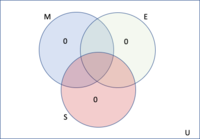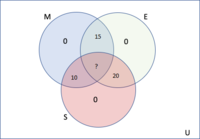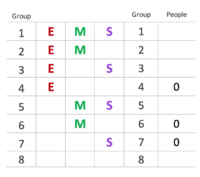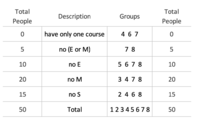I'm way beyond stuck with this problem...
In a certain school with 50 students, the school offers economics, mathematics, and
statistics in the first semester and finance in the second semester. 40 students take
economics, 30 students take mathematics, and 45 students take either economics or
mathematics. 15 students do not take statistics. No students take exactly one course
from these three classes in the first semester. If the finance class’s prerequisite courses
are mathematics, economics, and statistics, how many students are eligible to take
finance?
Applying 2 set theory between mathematics and economics I've gotten to the point that students studying both economics and mathematics are 25. I cannot proceed further than that; can someone lend me a hand?
The solution is 15. Thanks in advance!
In a certain school with 50 students, the school offers economics, mathematics, and
statistics in the first semester and finance in the second semester. 40 students take
economics, 30 students take mathematics, and 45 students take either economics or
mathematics. 15 students do not take statistics. No students take exactly one course
from these three classes in the first semester. If the finance class’s prerequisite courses
are mathematics, economics, and statistics, how many students are eligible to take
finance?
Applying 2 set theory between mathematics and economics I've gotten to the point that students studying both economics and mathematics are 25. I cannot proceed further than that; can someone lend me a hand?
The solution is 15. Thanks in advance!






